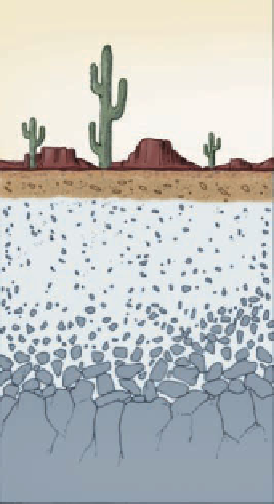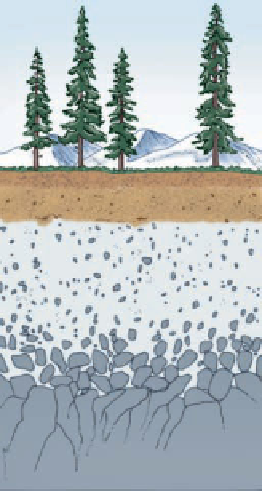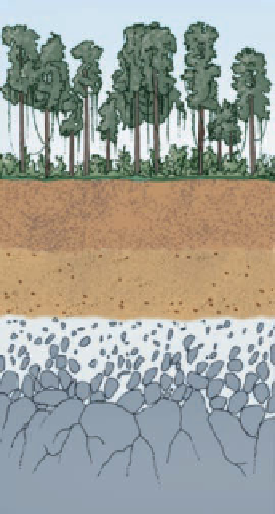Geology Reference
In-Depth Information
Dry climate (little leaching)
Moist climate (moderate leaching)
O horizon
Soluble ions
accumulate to
form caliche
and clay
A horizon
B horizon
O horizon
A horizon
B horizon
Water transported downward
and then back upward in soil
C horizon
Water travels downward
and escapes as groundwater
C horizon
Bedrock
Bedrock
Most soluble ions leached out,
clays and iron oxides form
b
Pedocal soil.
a
Pedalfer soil.
Very wet climate
(intense leaching)
O horizon
A horizon
All of the soluble ions
and silicon leaches out
B horizon
C horizon
Bedrock
Iron and aluminum
oxides form
c
Laterite soil.
◗
Figure 6.12
Three Major Soil Types Pedalfer, pedocal, and laterite form under different climatic conditions.
The difference in elevation between high and low
points in a region is called
relief.
And because climate is
such an important factor in soil formation and climate
changes with elevation, areas with considerable relief have
different soils in mountains and adjacent lowlands.
Slope
,
another important control, influences soil formation in
two ways. One is simply
slope angle;
steep slopes have little
or no soil because weathered materials are eroded faster
than soil-forming processes can operate. The other factor
is
slope direction.
In the Northern Hemisphere, north-
facing slopes receive less sunlight than south-facing slopes
and have cooler internal temperatures, support different
vegetation, and if in a cold climate, remain snow covered or
frozen longer.


















































Search WWH ::

Custom Search